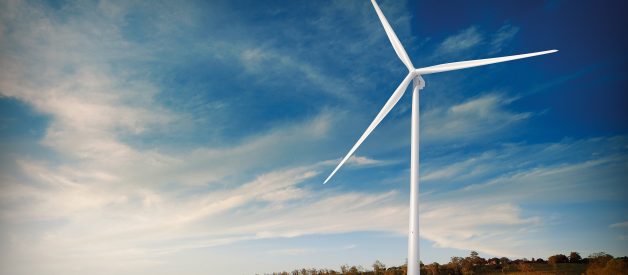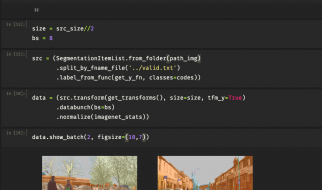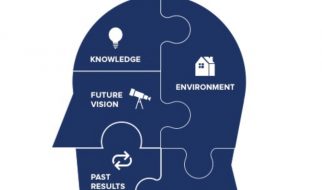Barnard On Wind Redux Post: Yes, the big, white, three-bladed wind turbines are the best

It seems as if every week, a new wind generator innovation is unveiled, sometimes in technology blogs, sometimes in TV segments, once even on TED Talks. They all claim to be better than the iconic, three-blade, horizontal-axis wind turbines we are most familiar with. So what is the most efficient design for capturing wind energy? If each design were subject to a constant wind source, and each design had the same surface area (for blades, aerofoils, or other component), which would generate the most electricity over the same time interval?
Short Answer
A modern horizontal-axis, three-blade wind turbine would generate the most electricity. Claims of superior performance by alternate technologies accompanied by requests for investment should be viewed extremely skeptically.
Long Answer
Maximum potential generation from a volume of wind is determined by Betz? Law (alternately known as Betz? Limit). Betz calculated that the maximum power that could be gained from the wind was 59.3% of its total energy. [1]
Wind generation devices include
Three-blade horizontal-axis wind turbines

Vertical-axis wind turbines with aerodynamic blades

Cabled, flying wind generators (prototypes and renderings only at present)[9]



Horizontal-axis wind generators of various types with no aerodynamic component to the blades

Vertical-axis wind generators of various types such as the Savonius generator without aerodynamic blades


Various devices that look like jet engines, or jet engines with big funnels, cones with pistons (the Saphonian [5]) or corkscrews




Towers that use passive solar heating around their base to create strong winds flowing up the tower past wind turbine blades spinning inside the tower [4]
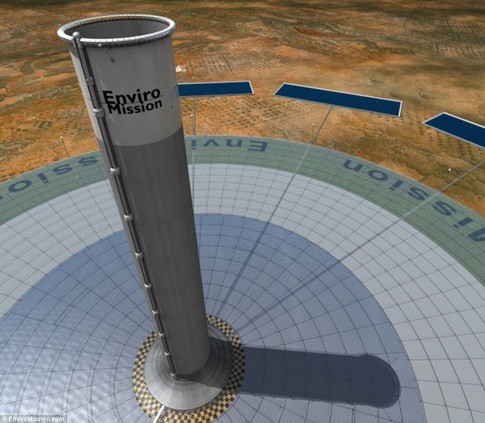
How do they stack up?
There are over 300,000 three-blade, utility-scale horizontal-axis wind turbines generating power today. They are the winning form of generation because they are the most effective. The reasons are easy to explain:
Aerodynamic blades add a component of lift-related force to drive the blade faster. This is a significant advantage over windmills whether horizontal- or vertical-axis. Any even adequately designed wind turbine with aerodynamic blades will always generate more electricity than the best generator without aerodynamic lift as a component of energy capture.

The blades of the three-blade design are always flying through clean air. The turbulence of the previous blade?s passage has been carried downwind by the time the next blade passes the same point. Vertical-axis wind turbines, whether bladed or pure drag forms, are flying through turbulent air a significant percentage of the time. The clean air allows the three-blade HAWTs a sizeable advantage. [2][8]

The blades of the three-blade design are always presented at the optimal angle to the oncoming wind. Aerodynamically bladed vertical-axis wind turbines change the angle of their blades to the oncoming wind constantly as they rotate, and only a portion of even the best designs are at an optimal angle at any given time. Aligning the blades of HAWTs to the oncoming air requires trivial amounts of energy compared to this advantage. [2] Savonius wind generators (named after a Finnish engineer who created a common variant in 1922) are even worse as they capture wind in the concavity in half of their surface area and shed wind on the convex portion with attendant drag and additional turbulence on the other half of their surface area. (I analyzed a potential investment for a small firm in micro-generation capability and saw that the inventor had created 5 ?innovations? around the basic Savonius premise that took it from a cheap form of energy sufficient for minor irrigation uses to a very expensive form of generation of energy sufficient for minor irrigation uses.) For context, here is a cost-effective Savonius irrigation windmill made out of an old plastic barrel and some scrap lumber.

Three-blades scale up well. One of the biggest advantages is that you can put a very big set of blades on a very tall tower and gather lots of wind above the point where it slows down due to contact with the ground.
Many ?innovative? designs have been proposed that use some sort of Venturi effect in combination with turbine rotors, but the fundamental problem is that in order to gather sufficient wind, you have to scale the outer shell up to the point where weight and material costs become prohibitive. An outer shell has to scale up at least to the square of the diameter and likely more. A 3 MW wind turbine with 80 meter blades can catch a subset of the energy from 20,096 square meters of air. A Venturi shell at that scale would have a circumference of 251.2 meters, would likely have to be at least 10 meters in breadth before noticeable effects started kicking in and would weigh an enormous amount.
Other ?innovative? designs fly wind-capturing devices of some sort or other ? blimp-shelled turbine blades, frames with turbines, kites with turbines ? into wind that?s more constant and higher off of the ground. The problem is that these are constantly running into scale limits. The blimp-shelled wind generator starts having rigidity problems long before it gets to utility-scale, generation. The flying kites with blades start requiring massive and very long cables in order to resist the forces. Generally these prototypes are very interesting and never see the market. All of them start requiring massive ground installations with extraordinarily large winches when you want utility levels of generation. When you start thinking ship-hawser levels of strength multiplied by kilometers of cable you start realizing that the weight and expense of the cable alone becomes prohibitive at any useful level of generation.[3]
Three-blades just sit in one place on a big pillar when they are generating electricity. This is very efficient, which is one of the reasons that they payback the energy used in construction faster than any other form of electrical generation. [6] One wind farm in Australia generated 302 times the electricity that was used to start them, brake them and turn them into the wind over a year. Compare this to the requirements for a flying wind turbine which has to be hauled in when the wind doesn?t blow, launched when the wind starts and has a heavy cable potentially kilometers long adjusted to maximize generation regularly.
The graph below is from the 2006 book by E. Hau., Wind Turbines: Fundamentals, Technologies, Application, Economics. Springer. Germany. 2006. Even at the time, this was not new news, but merely an obvious statement to include in textbooks.
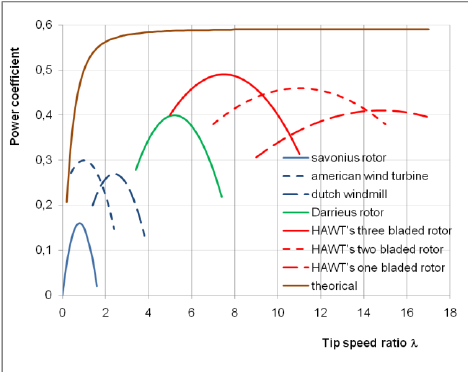
The solar-wind tower with turbine blades comes closest to being an interesting technology, however maintenance is never explored. The turbines are often envisioned as being stacked 3?7 or more horizontally up the length of the tower. Alternatively, much smaller ones are spaced around the base of the tower inside the tunnels leading from the expansive array of glass. They will be operating in very hot winds, likely 45 degrees Celsius or higher at velocities of 50 kph and higher. Effectively, the device is a convection oven that would cook a human in short order. Working inside of the tower would require refrigerated suits and breathing gear, if the wind velocity made that feasible at all. Pulling the turbine head or blades out of the tower to service them would be an extraordinary job. Closing the wind input would require closing gates on a diameter of five kilometres.
See my related post Invest carefully; wind energy ?innovations? are rarely kosher for the questions to ask about any innovative piece of wind generation, especially if someone is asking you to put money into it.
References
[1] http://en.wikipedia.org/wiki/Betz?_law[2] Why aren?t vertical axis wind turbines more popular?[3] Are airborne wind turbines a plausible source of cheap energy?[4] http://www.dailymail.co.uk/sciencetech/article-2019197/Arizona-solar-power-tower-worlds-2nd-tallest-building.html[5] http://www.energymatters.com.au/index.php?main_page=news_article&article_id=3325[6] Wind turbines pay back total environmental ?debt? in under six months[7] http://www.gwec.net/global-figures/wind-in-numbers/[8] http://www.windpowerengineering.com/construction/simulation/seeing-the-unseeable-in-a-rotor-wake/[9] http://www.skysails.info/english/power/power-system/skysails-power-system/[10] Paul Gipe?s excellent material on wind generation economics
Barnard on Wind was a global resource debunking anti-wind myths and memes that ran from 2011 to 2014 when it was retired. Due to the glories of the Way Back Machine, the content still exists. Now that TFIE is up, old Barnard on Wind posts will resurface regularly.
